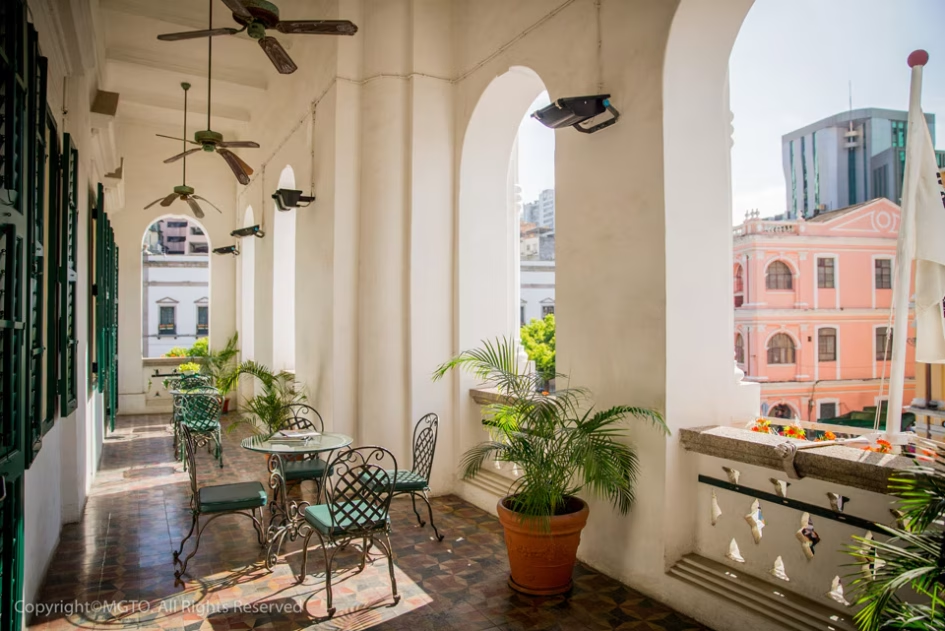One of my elective courses, namely “Heritage Places, Policies, Diplomacies”, allowed me to explore the impact of heritage-related policies on heritage management. This course reminds me of the Macao World Heritage Site – Historic Center of Macao. As a part of the historical site, the Holy House of Mercy could be an example for discovering the policies’ impacts.
The Holy House of Mercy is an integral part of Macau’s World Heritage Historic District and has greatly contributed to maintaining and continuing charitable social welfare in Macao. In 1498, the Queen Regent of Portugal carried out social service reform, founded the Lisbon Brotherhood, and started to establish institutions of the same nature around the world. The establishment of the Holy House in Macao is the embodiment of this reform. The Holy House of Mercy was founded in 1569 by the first Bishop of the Catholic Diocese of Macau, Belchior Carneiro, responsible for the work of charity relief and helping local residents. After that, it opened China’s first Western Hospital. In 1581, Bishop Carneiro resigned from all administrative duties due to ill health. However, he remained deeply concerned about residents’ needs and established a leprosy hospital, which was the first social welfare institution. Since the beginning of the 20th century, Holy House of Mercy has established rehabilitation centers for the blind, nursing homes for the elderly, and nurseries to meet Macao’s social needs in these areas. The institution founded by Bishop Janilau has continued to function for centuries, and its rules are still in place today.
The present Holy House of Mercy is active in the cultural field. The building is presented to the public as a museum to inherit and carry forward the rich cultural items of Catholicism and indigenous peoples. As a well-known charity organisation in Macao, that takes on some important social responsibilities, including The Our Lady of Mercy Home for the Elderly, The Creche of the Macau Holy House of Mercy, the Rehabilitation Centre for the Blind, and the Members Club for communication. Holy House of Mercy has outstanding aesthetic and artistic value. The coupled-column craftsmanship attracted a great deal of interest from artists, historians, and architects, and became an example of the integration of monuments with the use of administrative hospitals, pushing forward the development of architectural and technical design.it also had a huge impact on the exchange of medical technology between China and the West during Qing Dynasty. It was the first to introduce Western medicine to China, which was of great importance to future medical research. The Catholic artefacts preserved in its museum reflect the historical and cultural characteristics of the early Western culture introduced to China through Macao, promoting the exchange of human valuesIt ,it has also played a significant role in preserving Macau’s social welfare philosophy. Through its charitable approach,that actively involved in various fields.This highlights the strong connection between social services and the city of Macau.
In addition, Holy House of Mercy has a well-developed heritage conservation and management system,It is guided by the policies promulgated by the Macao government and ensures that heritage work is carried out steadily through the Institute of Cultural Studies and the deployment of cultural heritage, and the integration of the heritage sector with the government enables them to maintain their integrity and authenticity as cultural heritage. As previously introduced, the Holy House of Mercy is a part of the Historic Centre of Macau. To better conserve and perform this heritage site, the government has applied for adaptive reuse, which means reusing an existing building for other purposes besides the originally built.
In addition to its charity business, the Holy House of Mercy has also added some social purposes and commercial utility. For instance, the members club was operated in 2001, providing a platform for not the healing staff and their relatives to gather. It is a good social place for the Revolution community and others. The government believes that shortening the distance between the people and heritage sites can help form a sense of belonging and link the people with history and architecture. Engaging the historic site with people’s lives is a main strategy for conserving them. However, adaptive reuse may cause potential risks as the original function is weakened, and the uniqueness may disappear. The first floor of the Holy House of Mercy was redesigned and planned for office use which will cause the original authenticity of the Holy House of Mercy to be damaged.



Leave a Reply